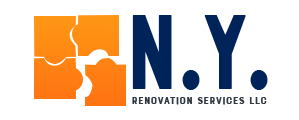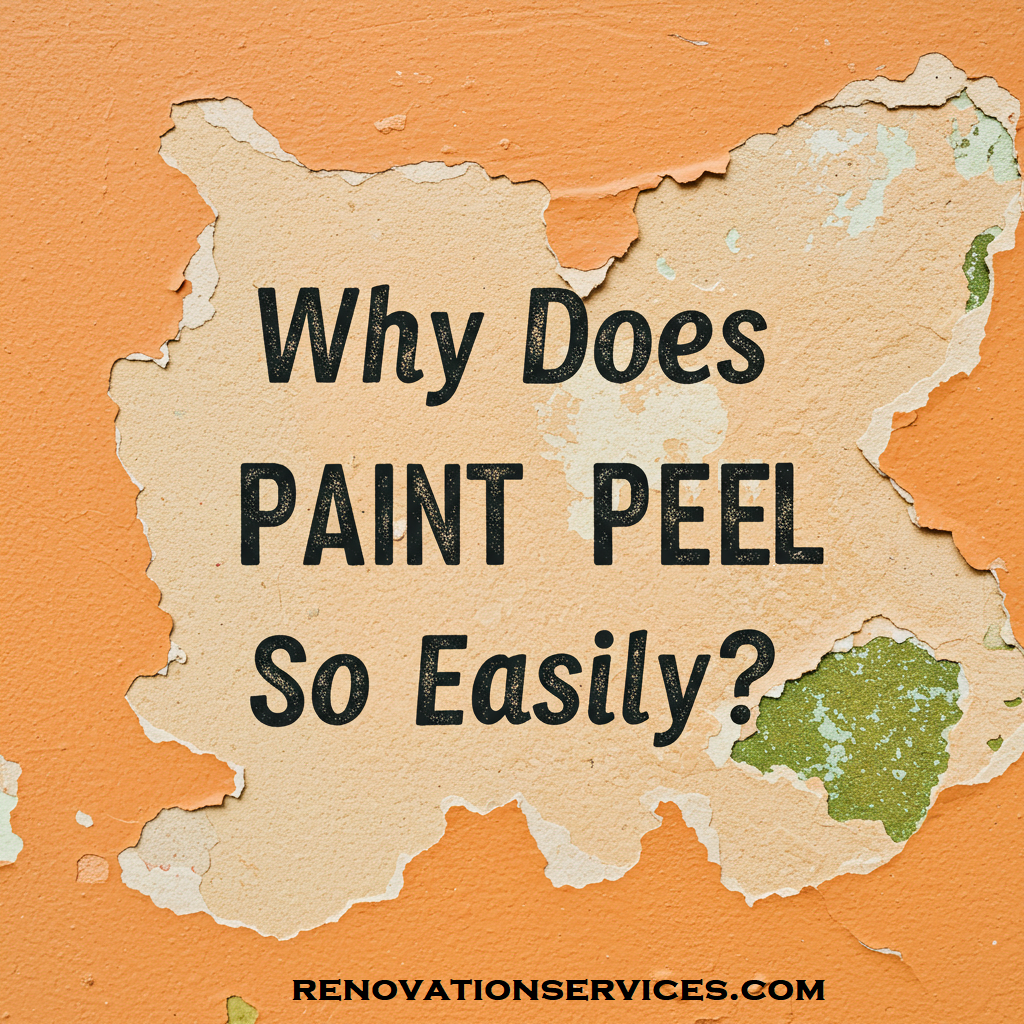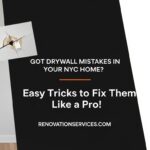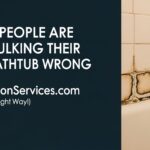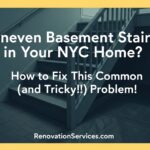Why Does Paint Peel So Easily? Complete Guide to Diagnosis, Costs & Lasting Repairs for NYC Apartments
Scraping one loose bubble on a wall can trigger an avalanche of peeling paint—especially in New York rental units where countless layers hide decades of shortcuts. Peeling is always an adhesion failure, but the underlying reasons span poor surface prep to incompatible paint chemistry. This guide dives deep into every cause, outlines current 2025 repair costs, presents an expanded five-layer permanent fix, and even covers lead-safe practices for pre-1978 buildings.
1. The Physics & Chemistry Behind Adhesion Failure
Paint sticks through mechanical keying (microscopic roughness) and chemical bonding (compatible resins). When either pathway is disrupted—say, by drywall dust, high alkalinity, or residual oils—the tensile strength plummets. Modern acrylic latex needs roughly 250 psi pull strength to stay put; anything less turns daily humidity swings and subway vibration into flaking disaster.
1.1 NYC Substrate Cheat Sheet
- Blue-board drywall (post-1990) – porous, needs PVA primer.
- Gypsum plaster over block (1920–1970) – alkaline for months; seal with alkali-resistant primer.
- Concrete bay-window walls (1970s towers) – high pH, moisture-prone, tricky for DIYers.
2. Twelve Core Causes of Peeling Paint
| # | Root Cause | Telltale Sign | Targeted Fix |
|---|---|---|---|
| 1 | No primer on fresh joint compound | Paint releases only on mud patches | Scuff sand & PVA prime |
| 2 | Latex directly over oil enamel | Large rubbery sheets detach | Chemical strip or bond-coat primer |
| 3 | Drywall dust not wiped | Powdery back of flake | Damp sponge wipe prior to priming |
| 4 | Humidity > 60 % | Bathroom & kitchen hotspots | Dehumidify; moisture-tolerant primer |
| 5 | Paint frozen in storage | Alligator cracks & poor gloss | Strip & repaint with fresh product |
| 6 | Mold or mildew spores | Black specs under flake | Treat with EPA-registered biocide (epa.gov/mold) |
| 7 | Concrete pH > 9 | White efflorescence crystals | Allow cure, acid-etch, alkali primer |
| 8 | Steam leaks behind wall | Bubbles along vertical lines | Fix leak, dry, then prime & coat |
| 9 | “Paint-and-primer” shortcut | Entire sheets peel off handily | Strip & use dedicated primer |
| 10 | TSP residue not rinsed | Greasy feel, dull sheen | Rinse twice with clean water |
| 11 | Joint compound thicker than 1⁄8 in | Hollow thud when tapped | Feather-skim with setting mud |
| 12 | Building vibration | Cracks at board seams first | Mesh tape, elastomeric topcoat |
3. Lead-Safety Alert for Pre-1978 Buildings
If your apartment predates 1978, peeling layers may contain lead. NYC’s Local Law 31 mandates XRF testing before disturbing more than two sq ft of paint. Landlords must hire EPA-certified renovators for encapsulation or removal. DIY? Use a D-lead swab and N100 respirator; never dry-sand suspected lead paint.
4. Case Study Library
4.1 Midtown Co-op, Built 1967
Issue: Every coat closet wall peeled after winter.
Cause: Latex egg-shell over original alkyd semi-gloss.
Solution: Chemical strip with Soy-Gel, sand 180-grit, apply acrylic bonding primer, finish two coats matte latex. Zero failures after 4 years.
4.2 Bushwick Loft, Converted Factory
Issue: Whitewash flaking from concrete column.
Cause: High alkaline concrete (pH 11).
Solution: 20:1 muriatic wash, rinse, Sherwin Loxon primer, elastomeric topcoat; still perfect after two freeze-thaw cycles.
5. Expanded No-Fail Five-Layer System
- Complete Removal – Scraper, 60-grit then 120-grit; HEPA vacuum dust.
- Wash & Neutralize – TSP-free degreaser, two clean water rinses.
- Primer Selection Matrix
• Bare drywall → PVA primer.
• Oil enamel → Acrylic bonding primer.
• High pH masonry → Epoxy alkali primer.
• Moist zones → Mold-resistant acrylic. - Skim-Coat – Setting-type compound (hot mud) for crack-free patch; sand 150-grit.
- Finish Coats – Two coats premium low-VOC acrylic ≤ 45 g/L; maintain 45-55 % RH, 68 °F during cure.
6. 2025 NYC Repair Cost Table
| Scope of Work | DIY Cost / sq ft | Licensed Pro / sq ft |
|---|---|---|
| Spot patch (≤10 sq ft) | $1.15 | $4.25 |
| Full wall scrape & repaint | $2.10 | $6.50 |
| Alkyd strip + bond coat | $2.85 | $7.80 |
| Lead-safe encapsulation | $3.65 | $9.10 |
| Typical 1-Bed Rental (700 sq ft walls) | $1 450 | $4 550 |
7. Tool & Primer Shortlist (What Actually Works)
- 6-in & 10-in taping knives + carbide scraper
- HEPA shop-vac with brush nozzle
- Eco-strip gel for alkyd removal (Citristrip or Soy-Gel)
- PVA primer (new drywall) – Zinsser Drywall Pro
- Acrylic bonding primer (oil-to-latex) – INSL-X Stix
- Alkali-resistant masonry primer – Sherwin Loxon
- Low-VOC topcoat – Benjamin Moore Scuff-X Matte
8. Frequently Asked Questions
Will peeling return if I only skim damaged spots?
Yes. Skim coats rely on underlying paint; any remaining weak layer eventually shears again.
How do I test if an old layer is oil or latex?
Rub with denatured alcohol on a rag; latex will soften and transfer color, oil will not.
Can I simply use “paint-and-primer in one”?
Skip it for troubled walls. Dedicated primers bond better and cost less per gallon.
Does NYC ban oil-based primer?
Many co-ops ban high-VOC products; city code allows them, but low-odor water-borne primers are safer.
Is full skim-coating mandatory?
If more than 30 % of the surface is compromised, full skim ensures uniform texture and adhesion.
How long must new concrete cure before painting?
At least 28 days; test pH below 9 before priming.
Optimal room humidity during painting?
Keep 45–55 % RH and 68–72 °F for cure and adhesion.
Can I paint over wallpaper glue residue?
No. Glue alkalinity weakens bond; remove or seal with shellac primer.
Should I sand between primer and topcoat?
Yes—light 220-grit sand removes dust nibs for a smoother finish.
Which sheen hides surface waves best?
Matte or eggshell; glossier finishes accentuate imperfections.
Related Resources
Want peeling-proof walls?
Call 347-455-1741 or email info@renovationservices.com for a free adhesion test and repair quote.
